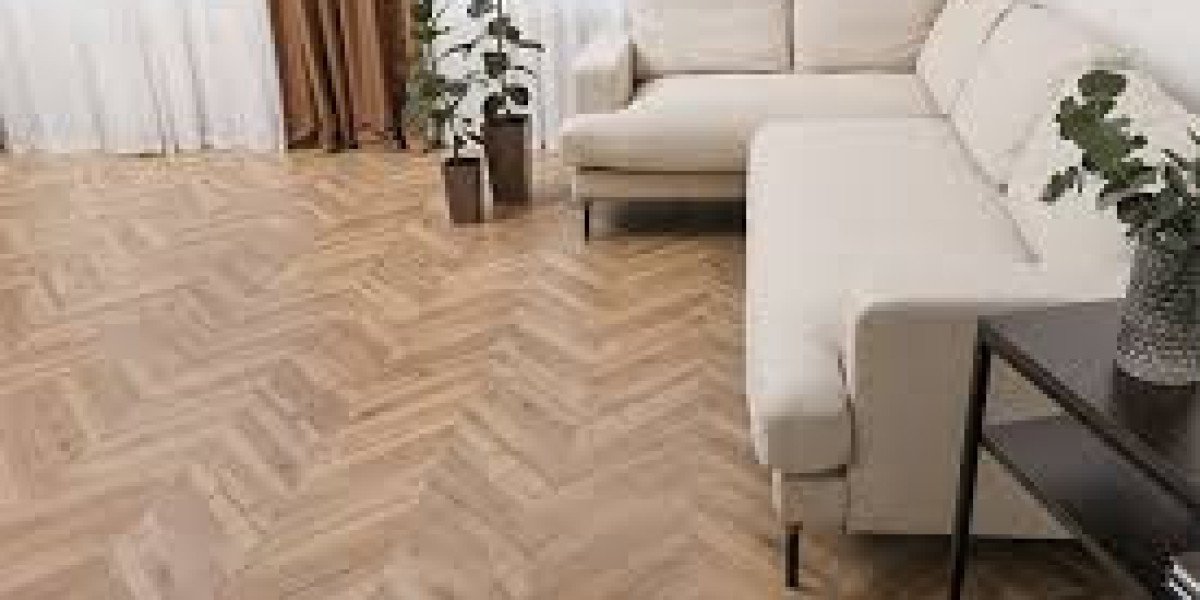Introduction
PVC flooring, commonly known as Polyvinyl Chloride or simply poly vinyl flooring, has grown in popularity because to its adaptability and durability in both residential and commercial applications. This synthetic flooring material is available in a variety of forms, making it appropriate for a wide range of applications. In this blog, we will look at what PVC flooring is and present important information to consider before installing PVC floor sheets.
What is PVC Flooring?
PVC is a synthetic plastic polymer composed of polyvinyl chloride (PVC) resin that is combined with additional additives to improve its overall qualities. This makes PVC extremely durable against wear, moisture, and stains. PVC flooring is available in a variety of forms, including sheets, tiles, and rolls, to meet a wide range of flooring applications. Its simplicity, ease of installation, and low maintenance requirements add to its appeal.
REHAU's polyvinyl flooring product, RAUFLOOR Neostein, exemplifies the company's innovative spirit. These rigid core vinyl tiles are comprised of PVC over a rigid core that consists of four special layers: a UV layer, a wear layer, a color film or printed layer, and a rigid core vinyl layer. The top UV layer protects the surface from most scratches, grime, and chemical pollutants, allowing for easy cleaning. The worn layer adds durability and abrasion resistance, while the printed layer creates the desired pattern on the surface. The ultra-dense, stiff core ensures waterproofing and durability.
Types of PVC Flooring Options
PVC vinyl flooring comes in a variety of forms. Each type serves a distinct purpose and is appropriate for different contexts.
PVC Floor Carpet: PVC carpet flooring has the look and texture of traditional fabric carpets. They are typically employed in locations that require a softer, more cushioned flooring surface, such as bedrooms.
PVC Floor Roll: PVC rolls for flooring are available in huge rolls, giving a continuous and seamless flooring option for larger areas. They are often cut to size into PVC flooring sheets after installation and utilized as a continuous covering with no apparent seams in big areas such as living rooms or commercial spaces such as offices and retail stores.
PVC Floor Tile: PVC flooring tiles are tiny, interlocking pieces that can be readily assembled to cover a floor. They come in different sizes. PVC floor tiles are flexible in design and can be replaced individually if broken.
PVC Floor Mat: PVC floor mats are often smaller, portable sections that can be installed over existing flooring. They are commonly employed for specialized purposes. PVC floor mats for rooms can be utilized as entryways, whereas PVC floor mats for offices can be used as workstations. They are typically used to protect the underlying flooring and may be readily cleaned or replaced.
Benefits of PVC Flooring
Durable and Wear-Resistant: PVC's supreme durability ensures that PVC tiles flooring can withstand heavy foot traffic and daily wear, making it ideal even for crowded commercial spaces.
Moisture and Water Resistance: PVC flooring is highly resistant to moisture and water, making it suitable for areas prone to dampness or spills, like kitchens and bathrooms.
Chemical resistance: PVC is highly resistant to many chemicals. Thus, PVC flooring is a great flooring option even in the healthcare sector, laboratories, and research centres.
Low maintenance: PVC is scratch- and stain-resistant and very easy to clean. As a result, PVC flooring requires minimal maintenance.
Easy Installation: Its flexible nature and simple installation methods make PVC flooring a convenient and hassle-free choice for both workers and customers.
Cost effectiveness: PVC is generally more economical compared to many other materials with similar properties. Thus, PVC flooring is a cost-effective choice for a wide range of applications.
Variety of Designs: PVC flooring comes in a wide range of designs, including wood, stone, and abstract patterns, allowing for creative customization. PVC wooden flooring helps in replicating the appearance of wood planks, while PVC stone flooring helps in recreating the looks of marble or granite, providing an economical alternative to hardwood and natural stone floors.
Factors to consider before installing PVC flooring
Subfloor Preparation: Ensure the subfloor is clean, level, and free of any waste or litter.
Space Suitability: Consider factors like moisture levels and foot traffic to choose the right type of PVC flooring for the required space.
Installation Method: Depending on the type of PVC flooring (sheets, tiles, rolls, etc.), select the appropriate installation method. They can be installed using adhesives or without them using the click-and-lock system.
Conclusion
PVC flooring, with its versatility, durability, and easy maintenance, has become a preferred choice for various settings. By understanding the different types and considering essential installation factors, you can make an informed decision to enhance the aesthetic and functionality of your space.








